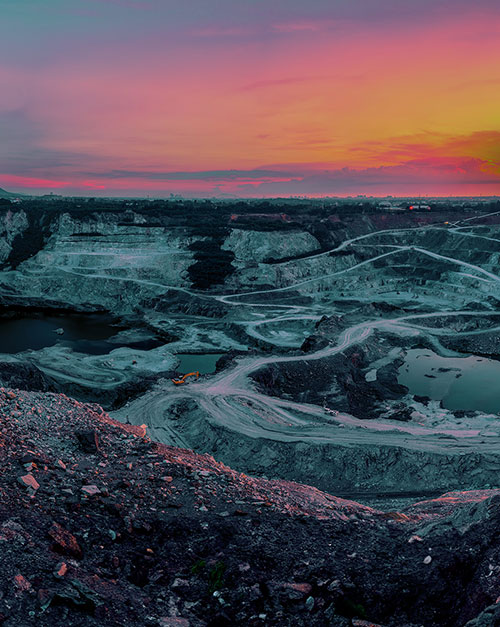November 05, 2024 • 3 min read
Using autonomous assets to transform mining in underground, populated, and sensitive sites
Innovative technology can solve some of the challenges posed by increasingly complex locations
Global demand for critical materials like copper and rare earth minerals is reaching unprecedented levels. These raw materials are essential to produce the technologies underpinning the energy transition towards renewables.
As existing mines become depleted, miners are turning to more remote and inaccessible sites. Many of these sites lie deeper underground or below densely populated cities or sensitive ecosystems, creating pressure on miners to innovate.
“One important way to tackle the complexities of modern mining is automation,” says Brad Derada, Senior Director at Worley Consulting. “It helps our customers reduce human presence in increasingly dangerous conditions and embrace new opportunities to enhance productivity, minimize environmental impacts, and cut costs.”
Using automation to increase the productivity and safety of deep underground mines
Automated technology has already revolutionized mining by improving safety and operational efficiency. Deep underground mines have long been associated with hazardous conditions, from gas build-ups to cave-ins.
“By reducing the number of people underground and automating tasks that were previously done manually, we’re not only making the operation safer but also optimizing production,” explains Derada.
Autonomous drilling rigs, haul trucks, and loaders have already been widely employed underground and are being improved daily. The next step is to examine other pieces of autonomous infrastructure to further reduce human presence underground.
“These last hurdles, along with the move to battery-electric fleet as part of decarbonization requirements, will open the door to a new way of underground mining,” says Derada.
“This new way may not require the costly ventilation shafts and ventilation systems traditionally designed to keep the environment habitable.”
Optimizing operations in densely populated areas
Excavating and building mines underneath highly populated areas poses unique challenges as it’s critical to minimize surface disruptions.
Autonomous assets enable more discreet and efficient operations, reducing the need for large crews and heavy machinery that might interfere with daily life. By using automation to conduct routine tasks such as material handling and logistics underground, companies can limit human exposure in densely populated zones and reduce the visibility of the mine.
The new assets can also reduce the environmental footprint of these operations. Our customers are contributing to more sustainable urban development by using automated equipment that consumes less power and operates more efficiently.
“We are not only reducing the risks but also making the entire process cleaner and more aligned with sustainability goals,” says Derada. “Whereas the traditional way of transporting materials from mine to port may involve surface conveying, trains, or trucks, we are increasingly seeing fully autonomous underground conveyor tunnels being utilized.
“This is particularly the case where there are significant environmental and community concerns that need to be addressed when looking at surface impact.”
The road to fully autonomous operations
While significant progress has been made, the future holds even more exciting possibilities, such as the development of fully autonomous underground mines.
“The next step is fully unattended,” says Derada. “If we can remove the requirement for human entry, we could dramatically reduce the operational costs and get closer to eliminating the safety risk.”
Regulations present one of the main challenges to fully autonomous underground mines. Existing standards require life-support systems designed for human presence, even in spaces that might be inhabited by machines alone.
“The challenge is that some of the standards aren’t progressive enough to take this into account,” explains Derada. “We can help customers navigate these hurdles and seek exemptions, allowing them to push towards truly unattended mining environments.”
A future beyond mining
While mining is currently leading the use of autonomous systems in underground settings, the possible applications of this technology are vast. Other sectors operating in densely populated areas, such as construction or utilities, are also starting to adopt autonomous solutions.
These technologies can help reduce human exposure to dangerous environments, streamline workflows, and ensure projects are completed faster with less environmental impact.
This new era of automation is shaping the future of how industries operate in challenging environments where safety, sustainability, and efficiency are critical.
“We’re looking at a future where automation isn’t just a tool – it’s the standard,” says Derada. “The industry is moving in that direction, and it’s exciting to see the transformation happening right now.”




